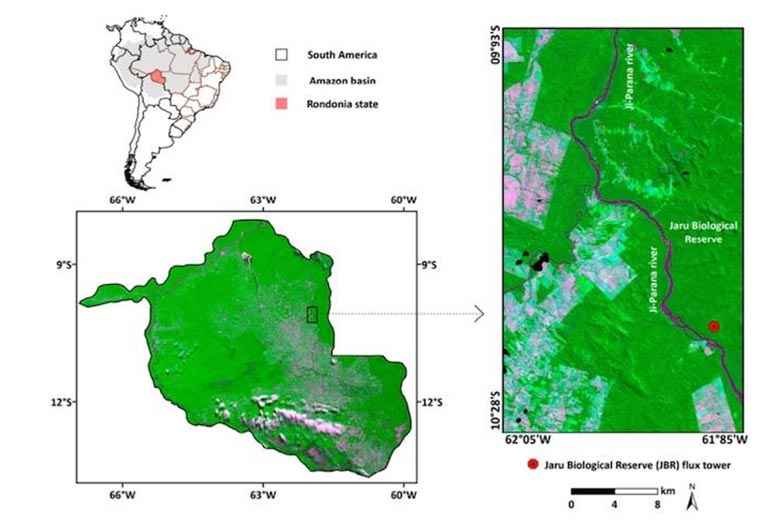
This map shows the study area and location of the flux tower used.
A recent study in the peer-reviewed journal Ecohydrology headed by University of Kansas researcher Gabriel de Oliveira gives important context to the fires burning big swaths of the Amazon today, most of which were set intentionally by farmers and ranchers to convert forest into land suitable for grazing animals or growing crops. The researchers sought to discover how these changes to land cover affect the exchange of water and heat between the surface of the Amazon and the atmosphere overhead.
Continue reading at: Deeper Insight Into 2019 Fires From Satellite Study of Amazon Rainforest

No comments:
Post a Comment